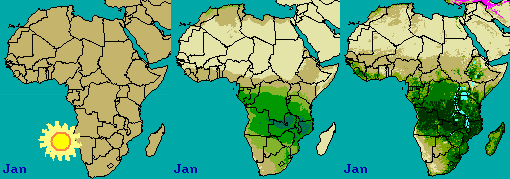Africa is a large continent, with forests, grasslands, and deserts. Farmers in Africa grow crops each year to feed their families and animals, hoping that there will be something left over as seed for next season and to sell to other people. If something goes wrong and the fields do not produce enough food, farmers, their families, and other people who depend on them might not have enough to eat. When little or no rain falls in an area that usually gets rain, crops and pastures there start to wither and die. This is called a drought. In most of North America, plants grow when the weather warms up and the spring rains come. In most of Africa, it is warm all year, and plants begin to grow whenever it rains. Farming requires four basic things: sunshine, water, soil and seed.
Back to youth page | Back to vf-tropi.com main page
|
|||||||

